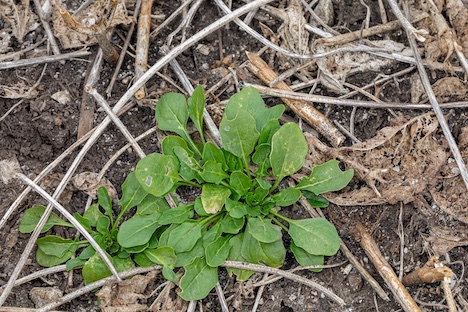Good Options for Fall Burndown
Oct 08, 2025

“Fall is an excellent time to control biennial and perennial weeds before they overwinter and become more difficult to manage next growing season,” said Ryan Peterson, location manager at Federated’s Osceola location. Herbicides move into the root systems and provide better control when applied in the fall.
Perennial weeds such as dandelions, white cockle, burdock, and thistle are best treated in the fall or spring – and when choosing between the seasons, fall offers more time and opportunity to get the herbicides applied.
Fall burndown is more than “just killing off old alfalfa and grass fields,” said Peterson. It’s a critical part of crop management for those using minimum or vertical tillage practices.
The most commonly used herbicides for broad-spectrum control of these problematic weeds is glyphosate for grasses and broadleaves, and 2,4-D or dicamba (such as Banvel® or Clarity®) for broadleaves alone.
“Glyphosate is better at controlling alfalfa in the fall than in the spring,” said Peterson, and an additional herbicide application (2,4-D or dicamba) – or tillage – will be required in the spring to completely control the alfalfa, or an alfalfa/grass mixture.
“Unless you plan to get on last spring cutting, now is the time to control that old hay field,” he emphasized. Getting effective burndown prior to planting is difficult.
The window for fall herbicide application is open through October. And, just as in your lawn, broadleaves are best controlled in the fall (consider your pasture acres).
Schedule fall burndown applications as soon as possible to ensure the most systemic activity from the herbicides yet this fall. Don’t let the warm autumn fool you – “winter is right around the corner,” said Peterson. Note: Herbicides need favorable temps; the warmer the better.
Perennial weeds such as dandelions, white cockle, burdock, and thistle are best treated in the fall or spring – and when choosing between the seasons, fall offers more time and opportunity to get the herbicides applied.
Fall burndown is more than “just killing off old alfalfa and grass fields,” said Peterson. It’s a critical part of crop management for those using minimum or vertical tillage practices.
The most commonly used herbicides for broad-spectrum control of these problematic weeds is glyphosate for grasses and broadleaves, and 2,4-D or dicamba (such as Banvel® or Clarity®) for broadleaves alone.
“Glyphosate is better at controlling alfalfa in the fall than in the spring,” said Peterson, and an additional herbicide application (2,4-D or dicamba) – or tillage – will be required in the spring to completely control the alfalfa, or an alfalfa/grass mixture.
“Unless you plan to get on last spring cutting, now is the time to control that old hay field,” he emphasized. Getting effective burndown prior to planting is difficult.
The window for fall herbicide application is open through October. And, just as in your lawn, broadleaves are best controlled in the fall (consider your pasture acres).
Schedule fall burndown applications as soon as possible to ensure the most systemic activity from the herbicides yet this fall. Don’t let the warm autumn fool you – “winter is right around the corner,” said Peterson. Note: Herbicides need favorable temps; the warmer the better.
Contact your Federated Agronomist to discuss fall-applied herbicides. Peterson said, “They are more than willing to help answer all your questions … and have a safe harvest.”